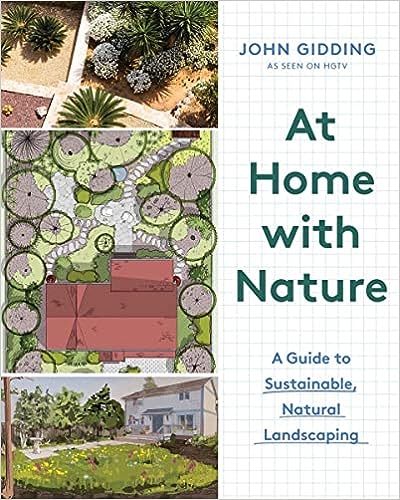Diane Keaton's backyard epitomizes the one trend that garden experts want us all to follow
Few trends hold quite as many benefits as rewilding – and we can start with lessons from the actress's Los Angeles yard


It's inevitable that 'trends' are met with varying opinions from experts (whether in terms of interior design or gardens), but it is hard to find a bad word about rewilding.
Though often labeled as a 'garden trend,' rewilding is more of a movement, or even an ecological restoration, designed to rehabilitate natural processes. It's possible for us all to contribute to rewilding, no matter the size of our space, and one of the most impactful ways to do so is to let our grass grow. This is where Diane Keaton's backyard comes into play.
The Annie Hall actress shared footage from her Los Angeles yard, featuring her dog, Reggie, 'soaking up the last days of summer' by her pool. And, while we were inevitably distracted by her dog and landscaped pool area, we couldn't help but notice Diane's grass growing beautifully wild in the backdrop.
A post shared by Diane Keaton (@diane_keaton)
A photo posted by on
In allowing her grass to grow freely, Diane is partaking in the rewilding garden trend – creating an almost mini jungle for any wildlife that may find itself in her home. It's one of the best things we can do for our environment, and its benefits haven't gone unnoticed by Catherine Capon, a rewilding advocate from Treedom.
'To truly rewild your garden, you need to reduce your lawn area. Start by making a change to your mowing routine and do this less frequently,' Catherine says. 'You should allow for a mix of tidy short and wild long grass to grow.'
As the expert explains, many pruned lawns are a monoculture and offer little habitat value for wildlife; however, longer grass will likely invite an abundance of new creatures, including frogs, newts, hedgehogs, and lizards, in some cases.

Catherine Capon is a rewilding advocate and communications consultant at the digital tree-planting platform Treedom. She is also a trustee of the European Nature Trust and a zoologist for Imperial College, London. Catherine's work raises awareness of the benefits of rewilding our ecosystems and living more sustainably beyond our gardens.

So, what more can we do to make our yard more wildlife-friendly? 'Replacing sections of your lawn with native wildflowers or other types of vegetation to create more habitat for wildlife is also essential for rewilding,' Catherine says. She also recommends we plant musk mallow, kidney vetch, tufted vetch, or clover – the latter of which is especially loved by bees.
Design expertise in your inbox – from inspiring decorating ideas and beautiful celebrity homes to practical gardening advice and shopping round-ups.
'Reducing your lawn size has multiple maintenance benefits, too, as it does not need to be mowed or watered as much - it's a win-win.'
For more advice on sustainable gardening, this time from HGTV's John Gidding, we're picking up this guide (available via Amazon) below.

Megan is the Head of Celebrity Style News at Homes & Gardens, where she leads the celebrity/ news team. She has a history in interior design, travel, and news journalism, having lived and worked in New York, Paris, and, currently, London. Megan has bylines in Livingetc, The Telegraph, and IRK Magazine, and has interviewed the likes of Drew Barrymore, Ayesha Curry, Michelle Keegan, and Tan France, among others. She lives in a London apartment with her antique typewriter and an eclectic espresso cup collection, and dreams of a Kelly Wearstler-designed home.
